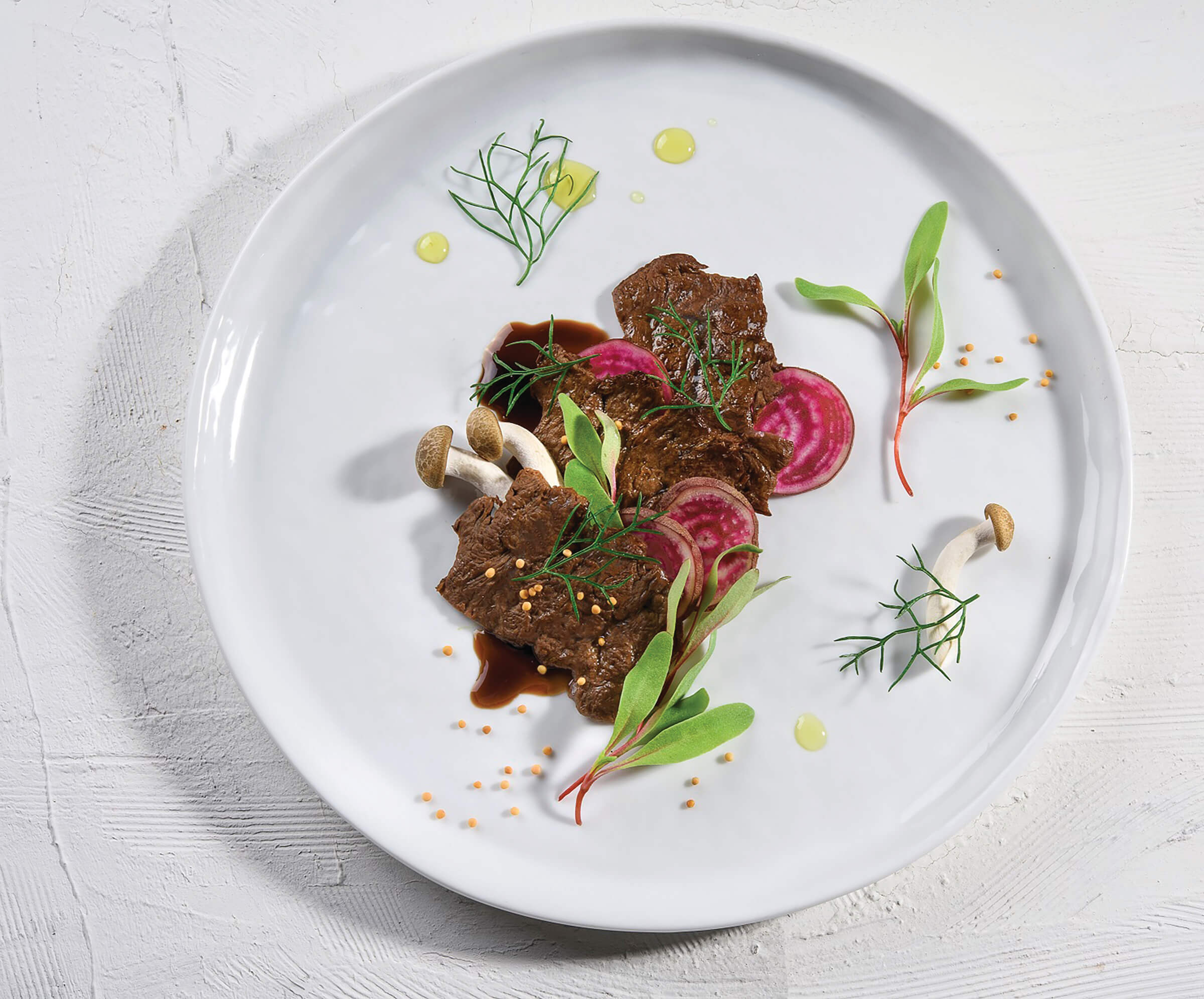
Meat cultivation: Embracing the science of nature
Use these evidence-based science communication tools to explain cellular agriculture to non-technical audiences.
In collaboration with Mattson, GFI developed a narrative and graphic, both rooted in familiar concepts, to help introduce meat cultivation to general audiences. We invite you to read the project report, read our blog about why we embrace the term “cultivated meat,” and use and adapt the narrative and graphic into your work.
Meat cultivation narrative
Rooting new forms of food production in familiarity

We can now diversify and strengthen the protein supply by producing meat in a new, more efficient way. Rather than raising and slaughtering animals, we can cultivate meat directly. This starts with the basic building block of all life—the cell.
From a small sample of animal cells, we can grow the same beef, pork, poultry, and seafood we enjoy eating today. In conventional animal farming, cell growth occurs in an animal. But we can grow the same cells in what is known as a cultivator.
The cultivator facilitates the same biological process that happens inside an animal by providing warmth and the basic elements needed to build muscle: water, proteins, carbohydrates, fats, vitamins, and minerals. Cultivating meat is similar to growing plants from cuttings in a greenhouse, which provides warmth, fertile soil, water, and nutrients.
This new method of meat production enables the natural process of cell growth but in a more efficient environment. The result is an abundance of cultivated meat, identical to conventional meat at the cellular level but free of pathogens and other contaminants. Cultivated meat looks, tastes, and cooks the same.
Compared with conventional meat production, meat cultivation is less resource-intensive, decreasing methane emissions, deforestation, biodiversity loss, water use, water pollution, antibiotic resistance, and foodborne illnesses.
Innovators around the world are working to bring cultivated beef, poultry, pork, fish, and seafood to market at a competitive price point. The FDA and the USDA will jointly regulate this new form of meat production in the United States.
Meat cultivation will expand the protein options available to consumers, providing the meat so many people desire, just produced in a new and sustainable way.
Meat cultivation graphic
Illustrating the parallel between familiar and novel forms of food production

Download the full report
"*" indicates required fields
Featured resources

Why GFI uses the term “cultivated meat”
It is possible to be science-forward and transparent while staying rooted in familiar concepts and appealing language. Mattson worked pro bono with GFI over the past nine months to explore,…

The science of cultivated meat
Learn about the science of cultivated meat and the challenges that must be addressed for commercial production.

Ensuring a clear path to market
Cultivated meat must have an efficient regulatory path to market to be successful. Learn how GFI advocates clear and efficient regulations.

Cultivated meat
This is your guide to cultivated meat. Explore our tools, resources, and expert analysis of the cultivated meat industry.
Header image courtesy of Aleph Farms
